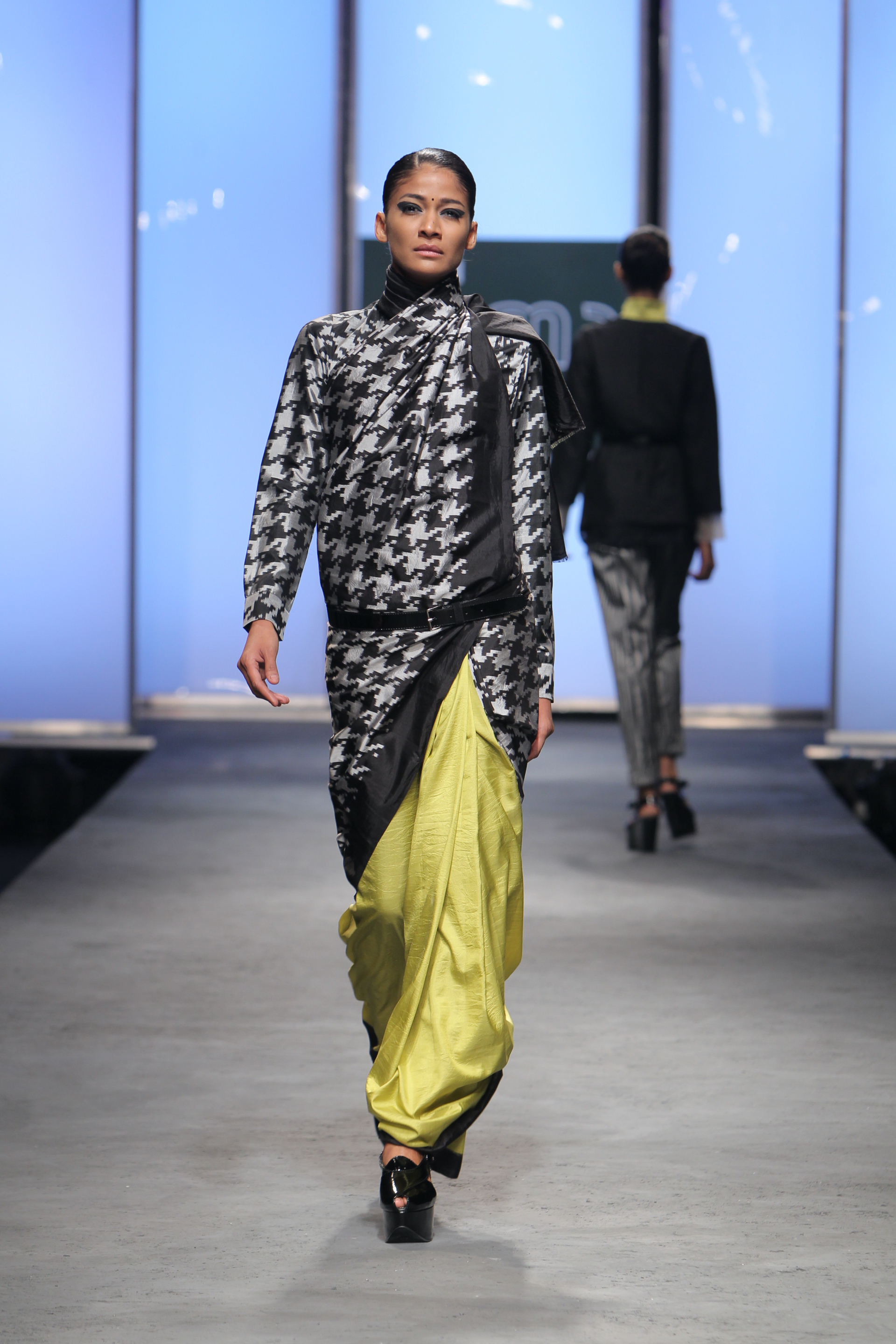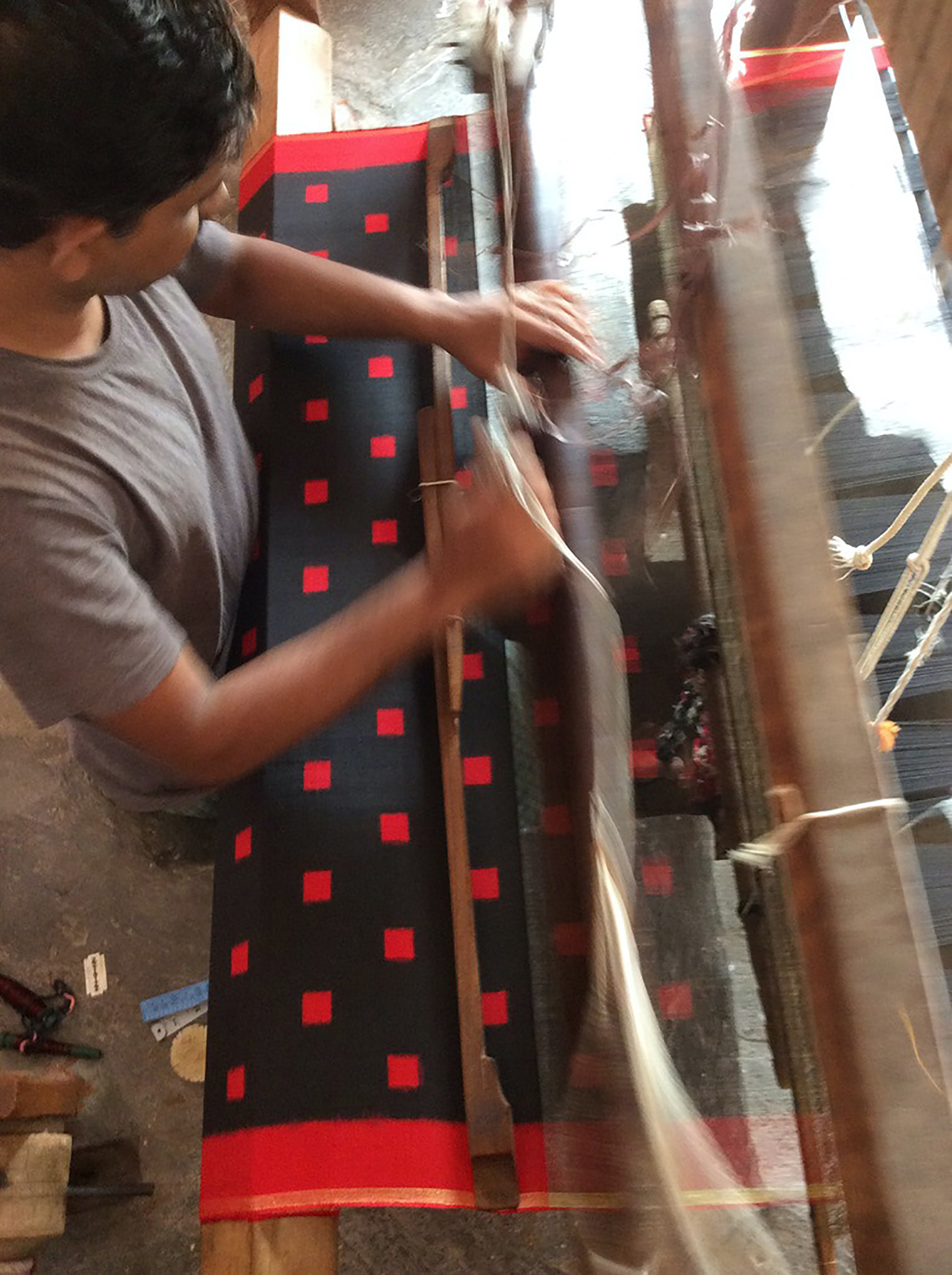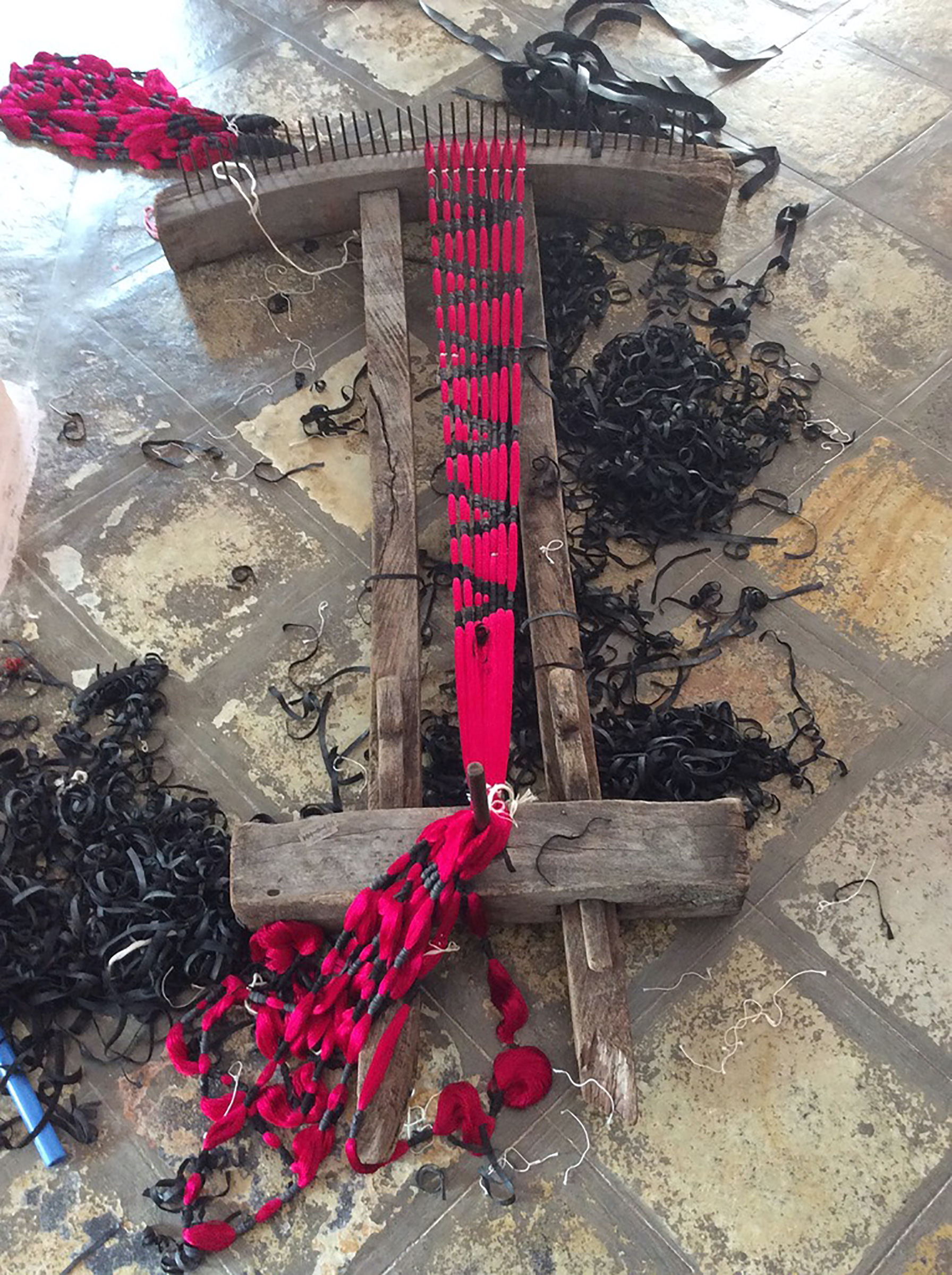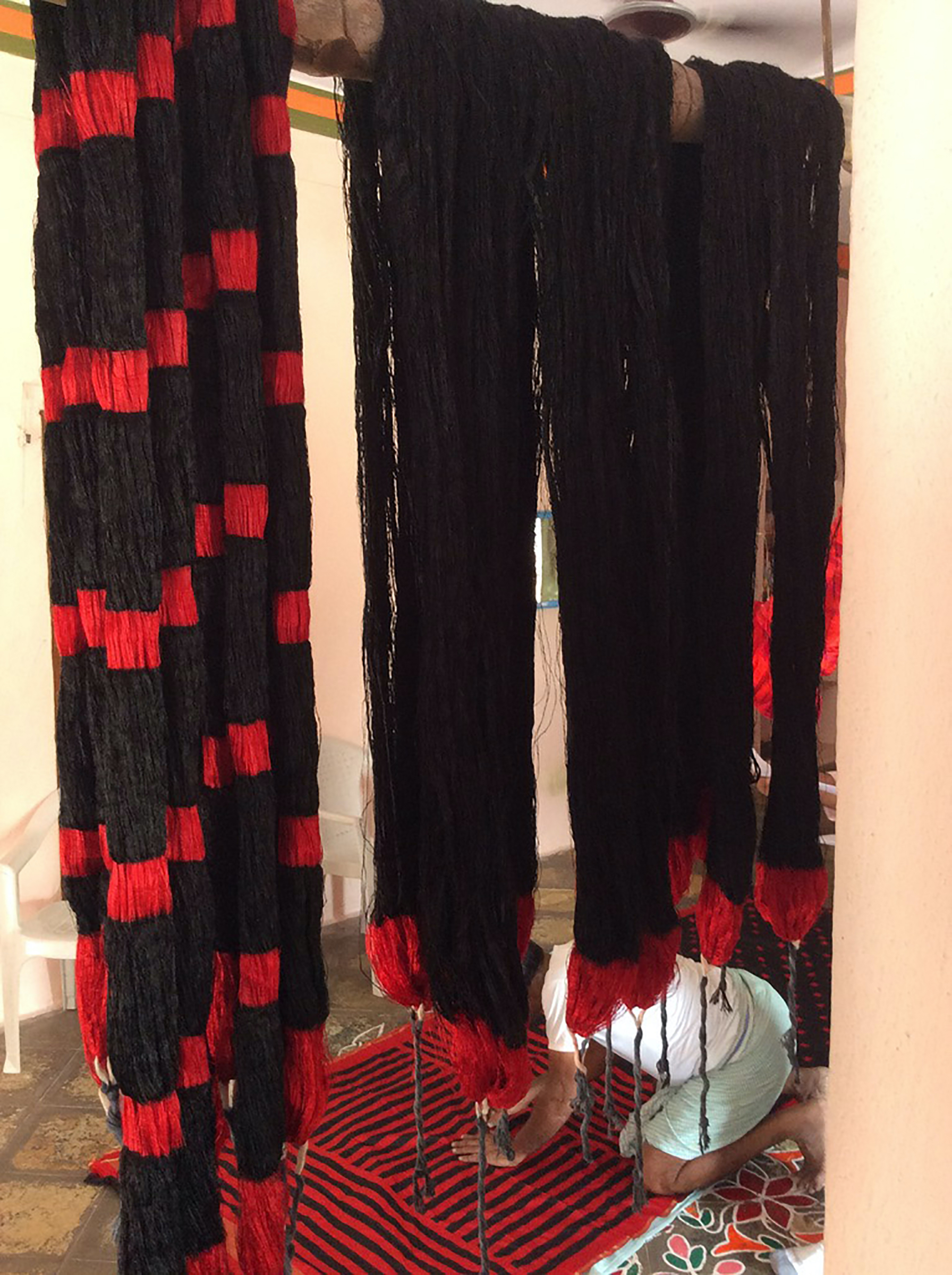We — Abraham & Thakore — are a design company involved with innovation in handmade textiles. Established in 1992, our core aesthetic is built on finely crafted contemporary products in apparel, fashion and soft home furnishings. This draws from traditional weaves and fabric techniques. With an initial focus on overseas retail, over the last decade we have evolved into a brand with a largely domestic presence. Our evolution in terms of design has been organic, and draws from a strong visual and material Indian identity which we interpret in our own signature ways.
As designers, our fascination for Indian textiles has been primarily informed by our training at the graduate level at the National Institute of Design (NID), Ahmedabad in the 1970s, where we were exposed to the rich craft heritage of India. A major source of inspiration came from studying the collections of historical textiles at the iconic Calico Museum of Textiles in the city, encouraged by our teachers. Another was through projects in the documentation of Indian crafts, which were required as part of our curriculum. For such research, David travelled to the state of Tamil Nadu in south India, to study the embroideries of the Todas, a pastoral tribe in the Nilgiri Hills. Rakesh travelled to Chirala, to study the Telia Rumals of the state of Andhra Pradesh in the south west.
Both these traditions, while technically distinct, are rendered in a refined geometrically abstract manner with the use of a limited colour palette of black, red and white. The Toda dress — for which their embroideries are used — consists of a single piece of cloth worn over a dhoti by men and women. In the Telias — traditionally scarves made for export to the Arab market — a double ikat pre-patterning process of weaving uses sesame seed and mustard oil in the treatment of the yarn, which is further naturally dyed. In hindsight, both these experiences were to perhaps, have a lasting impact on our work, considering that we consistently return to geometric minimalism as well as a use of black and white to define our collections and brand identity.

Rakesh found himself drawn to such ikat beyond this initial visit, and decided to learn more about the technique at the Weavers Service Centre — a government facility for crafts with a presence in almost two dozen centres across the country — in Hyderabad. This was under the guidance of Mr Ganjam Govardhan, a master weaver from the region who was employed there, also the recipient of prestigious awards for excellence in handcrafted textiles. Soon after, Rakesh introduced processes of weft-ikat durries from Nalgonda District in Andhra Pradesh to that of the durrie weavers of Warangal, a neighbouring district, where conventionally ikat had not been used until that point.
Ikats of India have since been a passion for Rakesh. Whether these are rendered in a geometrically bold and precise way in the Patola textiles of Patan in Gujarat in west India; figuratively in the Bandha of Sambhalpur in Odisha in east India known for its feathery, curvilinear patterns; or with finesse in the Telia rumals. Their unique characteristics can be seen in both motifs and textures, through specific variations in the warp and the weft as well as in the techniques of double ikat, where the accuracy of the patterns is maintained with immaculate mathematical precision throughout the weaving process. A similar technique of tie and dye resist patterning exists in Gujarat and Rajasthan called bandhani. Together, along with other traditions from across India, these have formed a constant source of inspiration for Rakesh’s designs, and Abraham & Thakore has revisited them consistently over the decades, each time with a new approach.
"A sound understanding of the techniques is essential to take a dialogue with a master weaver or craftsperson forward."
After graduating from the NID, both David and Rakesh worked in different fields of design. David pursued his interest and passion for fashion at first by interning in Helsinki with the Finnish textile brand Marimekko, celebrated worldwide for its original prints and use of colour; and later in Milan. On his return to India subsequently, he started working for an India-based company designing garments for the market in the United States. Rakesh, on the other hand, found himself at the epicentre of a path-breaking series of textile projects called Vishwakarma, which were initiated by the government of India and led by the late textile expert Mr Martand Singh.
Vishwakarma was conceived, developed and presented as part of a series of cultural diplomacy initiatives called The Festivals of India, between India and countries around the world to showcase and convey aspects of its then contemporary culture. It involved a mapping of textile traditions across the country, at a scale unprecedented in post independence India. Commissions to revive the best examples of museum-quality Indian textiles were then exhibited in prestigious venues across the country and abroad. Some of these included the Royal College of Art, London in the UK; the Musee des Arts Decoratifs in Paris in France; the Metropolitan Museum, New York in the United States and the Seibu Museum, Tokyo in Japan.
As the chief designer for the Vishwakarma commissions, Rakesh found himself, after the NID, on his next stage of exposure to the crafts of the country. This time, he encountered them in their living avatar, with the possibilities of introducing new directions in their design, production processes and end-uses. He also met with master craftspeople, becoming acquainted with In parallel, David’s work for exports helped him understand the nuances and requirements of urban, factory-based systems of manufacture. After almost a decade of working independently we came together to form Abraham & Thakore, synergising the professional expertise and skills that they had acquired.
A key learning from the fields that we were working in, was that a sound understanding of the techniques is essential to take a dialogue with a master weaver or craftsperson forward. As a designer, one may have a beautiful idea as a concept on paper, but without the knowledge of the intricacies of production, it is difficult to translate this on the loom. As we persevered, in time a new design vocabulary emerged, which we were told stood out for its uniqueness. Since these early years of experiments, we return constantly to these signature visual and material ideas in our work as a brand. We are grateful that both in India and abroad, these are instantly recognisable to our clients and that they have been acknowledged by well known names in fashion journalism as well.
Equally, we have been fortunate to have had the chance to work with master weavers and craftspeople who have themselves understood the need for change, and have collaborated with us on developing new ideas and designs, whether this is in ikat, Jamdani weaving from Bengal, Maheshwari fabrics from Madhya Pradesh or bandhani from Gujarat. Constantly taking inspiration from the textile traditions of India, Abraham & Thakore reiterates its commitment to handloom and traditional Indian textile craft. The wealth of India's craft tradition is incomparable in the world for its diversity and levels of craftsmanship. Flexible and innovative, the Indian craftsperson is constantly working with new techniques and new structures, to explore and develop modern market-relevant designs while maintaining strong links with tradition.
Happily, there are positive signs that the next generation of designers in India continues to engage with traditional craft. As the dialogue continues, we hope that the craft sector grows from strength to strength. For in this mechanised and digital world, the greatest luxury we have are the invaluable handmade products that continue to improve the quality of our lives.



